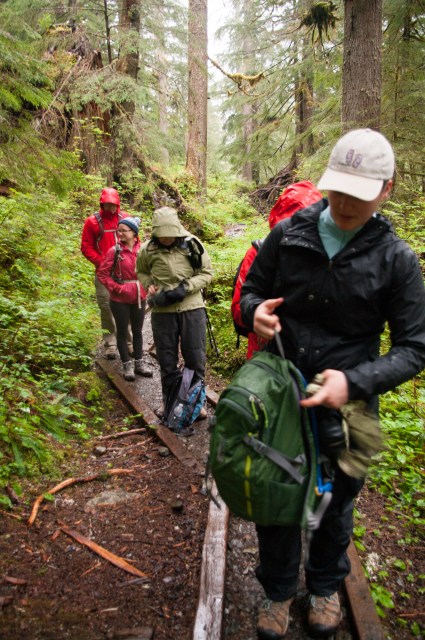 Outdoor Life
Outdoor Life
Mother’s Day Hike
For Mother’s Day this year, all I wanted was to go for a hike with Evie and my husband. I got a bonus in that my husband made me a chai latte and French toast (my favorites) for breakfast. Evie’s Uncle JoJo and Aunt KK were in town too and joined us as well. My husband got out Evie’s backpack and she got right in even though it was sitting on the floor. We were worried she wouldn’t want to get in it later if she spent too much time in there now.
We headed to Heybrook Ridge, a recently built trail that we haven’t been on yet. As we drove, a train paralleled us on highway 2. Evie got super excited and when the train went out of sight behind the trees, she would say, “where’s the train? Where’s the train?” She squealed with joy when it came back into view. We even watched it go over a bridge from the trailhead.

Evie wanted me to carry her on my back, but my husband told her that I get a break today and he would carry her. So sweet. She obliged and we headed into the mossy trees. The forest floor was carpeted in the green of starry Solomon seal, sword fern, bunchberry, and bleeding heart. The trail climbed with switchbacks up and up.
It didn’t take us long to get to the ridge. Clouds obscured the views of Mount Index across the valley, but while we were snacking they started to roll away. The clouds disappeared faster than Evie smothered peanut butter and jelly all over her face. Before we knew it, there was not a cloud in sight.

We lingered for a while, enjoying the company of others hiking with their families, basking in the sun, and marveling at Bridal Veil falls from afar. From here you wouldn’t guess that the falls gently cascade jagged rock that are so gentle that you can walk right up to it. It’s been years since I’ve been to the falls and Lake Serene. Maybe I’ll see if Evie is up for more stairs this summer.

On the way down Evie found a walking stick (still our wonderful magical hiking device) and walked almost all the way down to the trailhead. She is entirely fearless. We had to stop her several times and make her hold our hands on the steep terrain or she would have just kept on going, leaving us in the dust. I both love and hate this about her. She is fiercely independent, brave, and a little sassy. She scares the crap out of me sometimes, but I wouldn’t have it any other way. I’m a lucky mama.























































